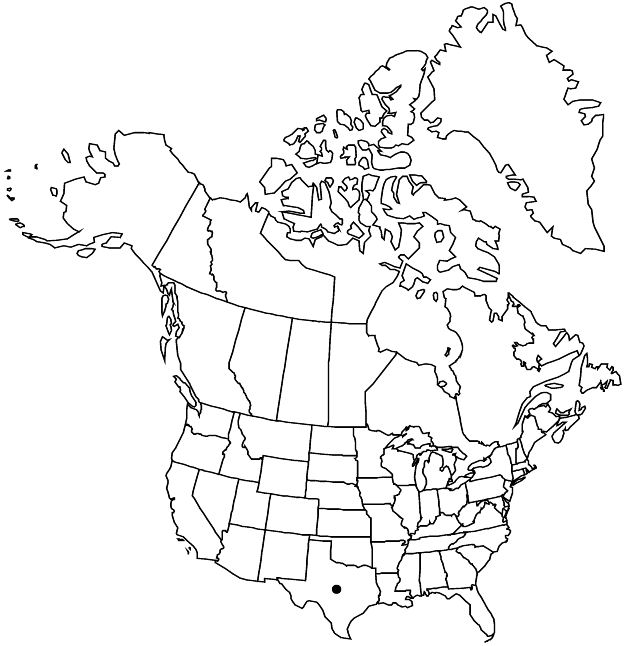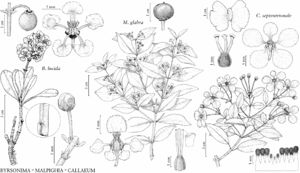Malpighia glabra
Sp. Pl. 1: 425. 1753.
Shrubs or small trees, 1–6 m. Leaf blades narrowly to broadly elliptic or ovate, larger blades 3–10 × 1.5–5 cm, apex usually acuminate, occasionally acute, surfaces glabrous or bearing a few fine, straight, appressed hairs. Inflorescences 1.5–3(–3.5) cm, (3–)4–10(–12)-flowered. Flowers: petals pink or pink and white or lavender-pink; anthers glabrous; ovary glabrous; styles nearly straight, parallel or divergent distally, ± alike. Drupes 7–13 mm diam., spheroid. 2n = 20 (Costa Rica).
Phenology: Flowering Sep–Apr; fruiting Oct–May.
Habitat: Roadside thickets, sandy plains.
Elevation: 0–100 m.
Distribution

Tex., e, s Mexico, West Indies (Greater Antilles), Central America, South America.
Discussion
Malpighia glabra, native in southernmost Texas, is rarely cultivated as an ornamental shrub in Texas, but many of the plants sold under that name are actually M. emarginata. Malpighia emarginata resembles M. glabra, but its leaves are usually rounded or obtuse at the apex and often emarginate or apiculate, and some pairs of leaves are crowded in dense shoots with very short internodes, while others are separated by much longer internodes (versus all more or less evenly spaced in M. glabra).
Selected References
None.
